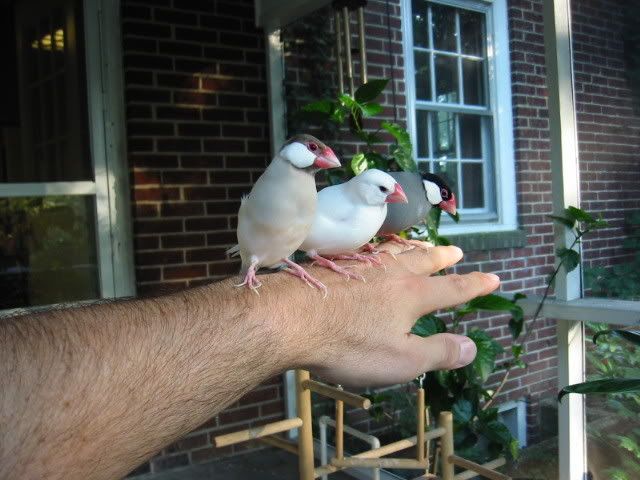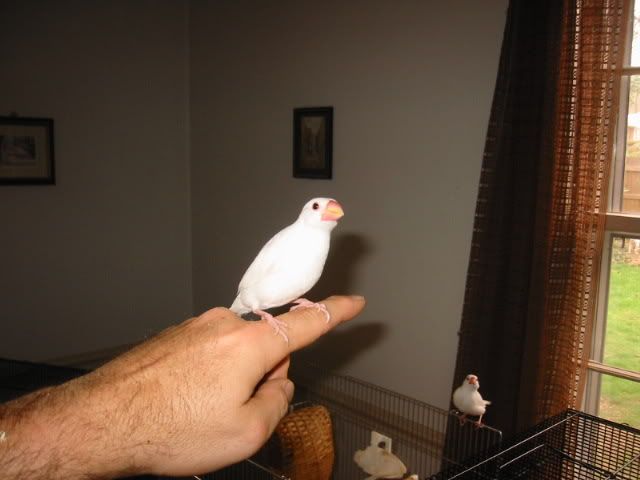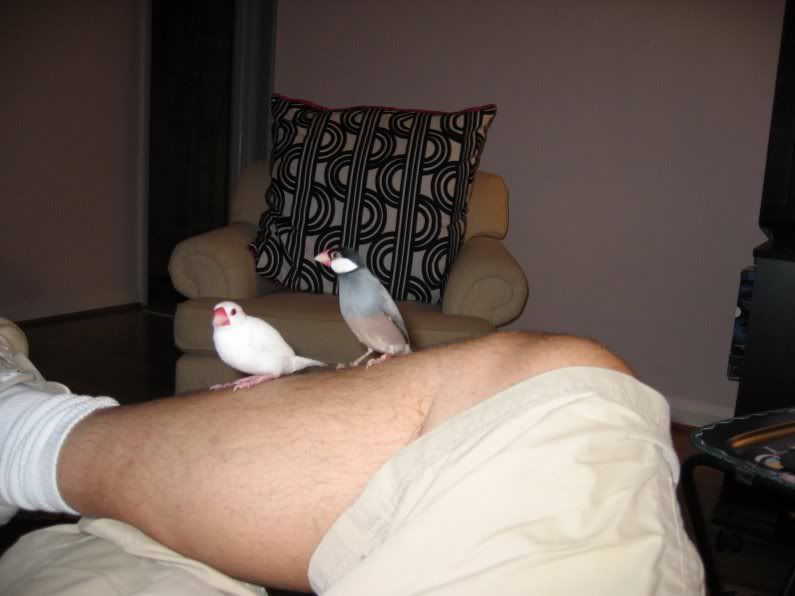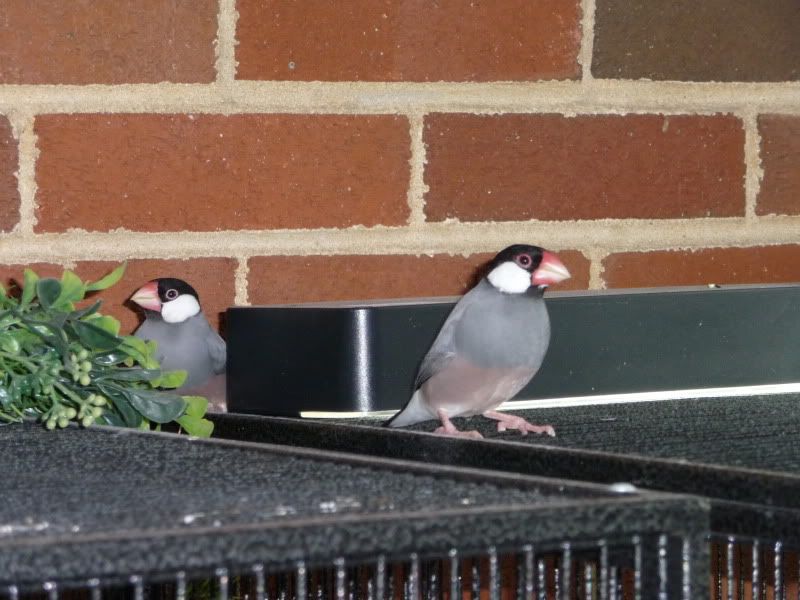Java Sparrows are nice easy-to-keep birds. They are very smart. They can be fingertamed, with some work, if you start when they are very young and know what you are doing - adults are pretty much untameable though. I wrote an article about how to do it, if you are interested.
Normal untamed Java Sparrows are not as flighty as
some smaller finches, if you are calm and make slow movements around them. But they are fairly active. Mine love green food, hemp seed, and home made egg food as treats - though their normal diet is finch or parakeet seed/pellet mixes. Javas also
love to bathe and will use their water bowl if you don't supply them with a little bird bath tub. A flower pot saucer with water will work too. They will bathe every day if you let them - and there's no reason they shouldn't.
I agree with Don's comments about the fact that they get along with most other birds but they can dominate if they are the majority. And they are bigger than most other finches so they may dominate just because of their size, without intending to. They do have large powerful beaks and can supposedly hold their own in a cage with a parakeet (budgie), which is not the case for other finches.
Java Sparrows are pretty social though they squabble a bit sometimes. You should always keep at least 2. But they will like being in a bigger flock too. My only suggestion is: if you put up nest boxes, put up more boxes than you need to stop competition for nest sites. Javas also like to sleep in nest boxes all year. Lastly, avoid buying your Javas at the same place because they are frequently all related - a "pair" may actually be 2 siblings from the same nest and they should not be bred together (this goes for any finches).
Here are photos of my tame Javas over the years. Some have tamed easily - others have been very stuborn. They are not as easy to tame as parakeets and I have a feeling that some people might never get the knack of taming them, because you have to very patient and calm. You may need to work at it and you pretty much have to start with juveniles right out of the nest that you cage separately while doing the initial taming. Once fully tame, they can get very friendly however.
Here is a rare photo where I got all 3 of Javas to sit together.

These 3 Javas I had in the 1990s were very tame - they are not wing-clipped in these photos. They could fly and would even come when I called them. Here they are outside on my screened porch.

This baby White Java finger tamed in one day because the other one I had was already extremely tame.

These are 2 I had more recently.

Perched on my leg - they liked to fly around my house.

Here is the same Gray Java with another Gray one. After my very tame White Java died, these 2 Gray Javas got wild again. I can let them out and they will return to their cage without problems - but they will not sit on my finger any more. I think the original Gray Javas are a llittle harder to tame and keep tame, than the White and Fawn mutations. My experience has been, if you have an
already tame one, and get an untamed
baby, you can tame the new young bird easily - but if you have a tame one and get a wild
adult, both birds can end up untame.













